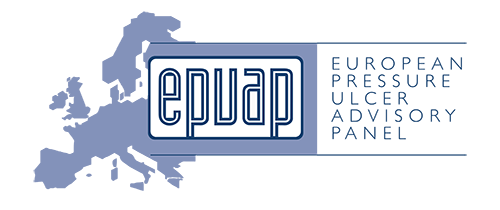Chair: Peter Worsley
Description: Patients managed using medical devices are more likely to develop a PU or skin breakdown. Patients are in contact with a vast number of different devices such as endotracheal and nasogastric tubes, oxygen tubing, noninvasive ventilation masks, urinary catheters among others. Skin and tissue damage associated with these medical devices involves interaction with a device or object, which is, directly or indirectly, in contact with the skin or implanted under the skin, creates localized forces that deform the superficial and deep tissue.
Patients of all ages are affected and we need to consider the risk of skin damage associated with use of devices and how they can be avoided; understand the etiology to identify what kind of interventions should be implemented to prevent these injuries.
Chair: Carina Baath
Description: To be prepared before using PERSONAL PROTECTIVE EQUIPMENT (PPE). During the COVID-19 outbreak, health care personnel had to use personal protective equipment (PPE), when caring for patients both at hospital settings but also in-home care sectors. There are different challenges due to the context of using PPE, of how managing the PPE, and possible solutions. Find out more during this session, from three researchers studies and their experiences from different countries.
Chair: Amit Gefen
Description: The recent outbreak of the coronavirus 2019 (COVID-19) pandemic has brought the topic of pressure ulcers into sharp focus. With the rising global numbers of patients who require intensive care, the increased use of prone positioning and the intensity of application of medical devices for life support and monitoring, the incidence of pressure ulcers is already reported to grow rapidly. This session will explore the aetiology of pressure ulcers in the context of COVID-19 and explain how the disease appears to interact with the known cell and tissue injury cascade. This up-to-date aetiological knowledge guides immediate actions, as well as long-term strategies for prevention and management of pressure ulcers and, will support actions by clinicians, patients, industry and regulators.
Chair: Zena Moore
Description: The International Guidelines on Pressure Ulcer Prevention and Management, developed through the collective efforts of EPUAP, NPIAP and PIPPA and the small working groups, were launched in November 2019. These guidelines are a rich, invaluable resource for all healthcare professionals and associated service providers involved in the management of individuals at risk of, or with an existing pressure ulcer. It is pertinent at this point to explore the guideline in terms of insights and activities related to it. Thus, this session will explore what has been happening with the guideline itself. Further, a unique element of this guideline was the consumer survey that informed the development work and thus, results from the survey are included here. Finally, given that no guideline stands still and updating of the content is always important, the final lecture will outline the work of the guideline methodology task force.
Chair: Alison Porter Armstrong
Description: The surgical management of pressure ulcers is a key element in the armoury of treatment interventions available. Despite this, much of the focus on pressure ulcer management is concerned with conservative management. This is compounded by the fact that many patients may not be suitable candidates for surgery. None the less, when selected for the right patient, surgical management is of significant importance. Thus, this session will focus on surgical management of pressure ulcers and in doing so, there are three excellent lectures. The first lecture will explore surgical techniques, the second focus on post-operative management of the individual and the final lecture discusses rehabilitation and the preparation of the individual for discharge home. Collectively these lectures will provide the participants with a comprehensive understanding of the key issues in caring for an individual undergoing surgery for the repair of a pressure ulcer.
Chair: Jane Nixon
Chair: Maarit Ahtiala
Description: COVID-19 has been and still is a challenge in healthcare worldwide. There are more critically ill patients who need to be treated in a prone position to improve their oxygenation and change to survive. Prone positioning is a very high risk of pressure ulcer/injury (PU/PI) development. To carry out the turning of the patient in prone is a challenge for the medical staff especially with morbidity obese patients. In this session, you will learn more about the positioning of patients with Acute Respiratory Distress Syndrome (ARDS) in prone, recommended PU/PI prevention methods and the challenges the medical staff will face.
Chair: Guido Ciprandi

